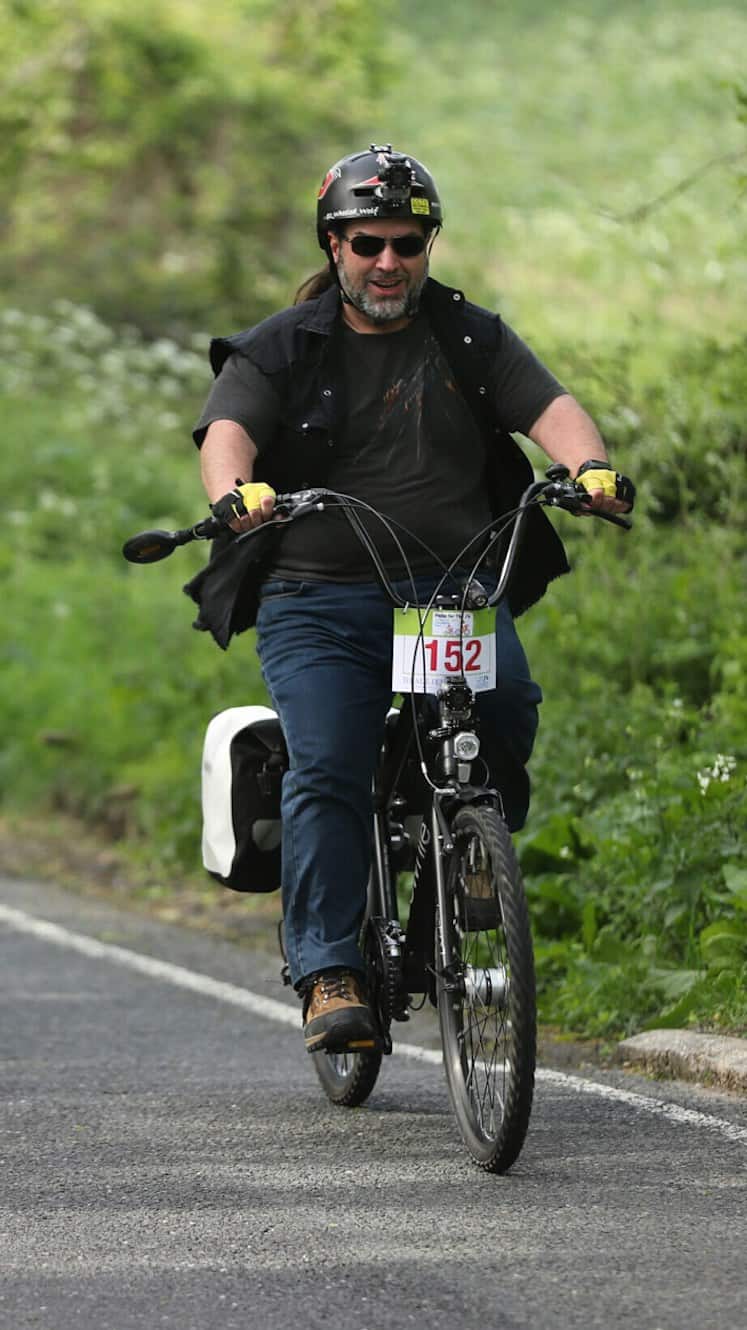What difference does using your cycle as a mobility aid make to your life?
Mostly my independence, as I find walking and using the bus painful, time-consuming and tiring. When I use my cycle I can do more and change my plans as I cycle. Cycling is a lot less painful and it also helps me manage my disability, whilst acting like a form of physiotherapy. But most of all it helps me with the shopping as I have difficulty carrying heavily laden bags by walking and using buses, whereas the cycle takes the load and is far easier to carry things back home.

What challenges, if any, have you encountered when using your cycle as a mobility aid?
More than I can put into a few sentences – I could easily write a book on them. The worst is poor quality cycle infrastructure, where local authorities put in a surface to look pretty for the area, but is actually a hindrance to cycle on and for those who use wheelchairs. For me, a good example of this would be Hilly Fields and the Wivenhoe Trail, where you’re cycling on what is basically sand, or Gryme’s Dyke which is a muddy track most of the time.
Then there are barriers that councils put in to ‘slow cyclists’ or stop motorcyclists using the route, but this means that those with wheelchairs or non-standard cycles can’t easily use these routes. The most recent example I have experienced was off Norman Way, on a short shared path and bridleway.
But the biggest issue are drivers parking or blocking cycle paths/lanes, access points and dropped curbs. The worst I know of is the Crouch Street Cycle Contraflow.
And lastly is the ban on cycles in pedestrianised areas – it’s based on false beliefs that cycling is dangerous. Evidence has proved it’s not, and that more incidents happen with motor vehicles that are allowed in pedestrianised areas.
If there was one thing that could change to help you to use your cycle as a mobility aid, what would it be?
Easy really – treat cycles as proper transport for all (especially those with disabilities) and as part of the solution to travelling, and not a hindrance or problem to it. You would not create roads with the same sort of barriers for car drivers to deal with, nor expect them to get out and push their motor vehicles. Build infrastructure like they do in the Netherlands, so that all can use it no matter their age or ability, with next to no barriers to cycling.
Find out more about My Cycle, My Mobility Aid
